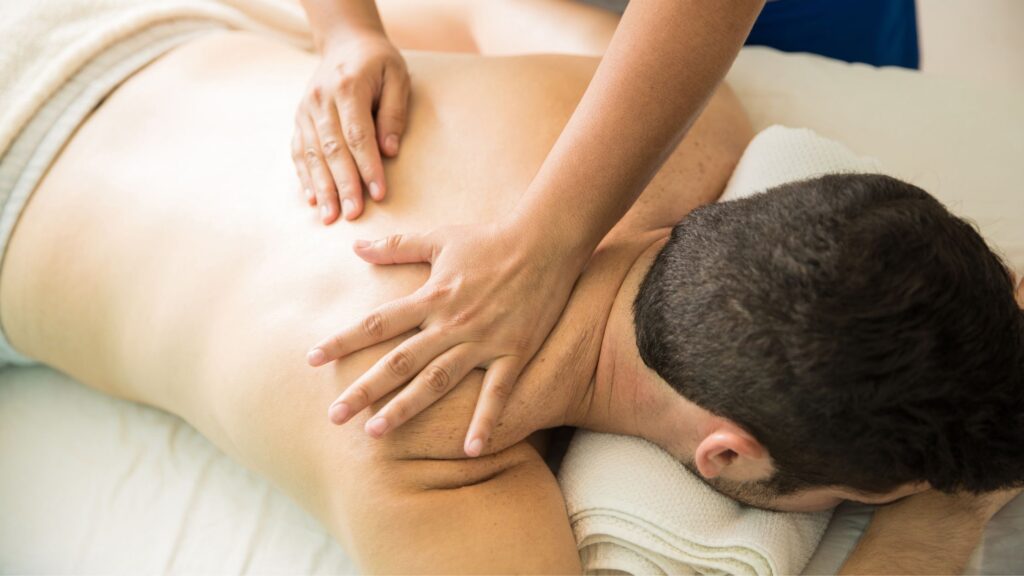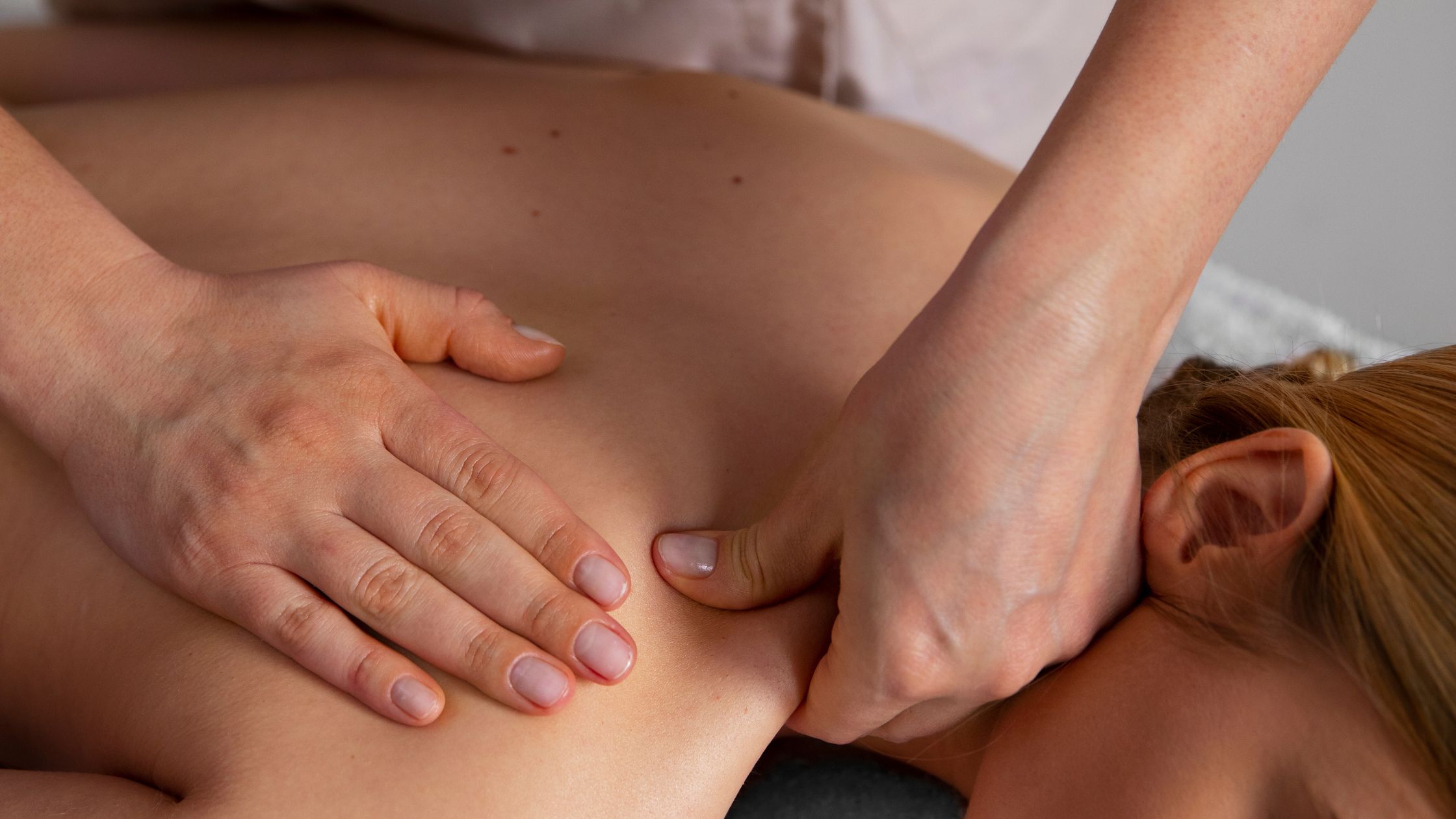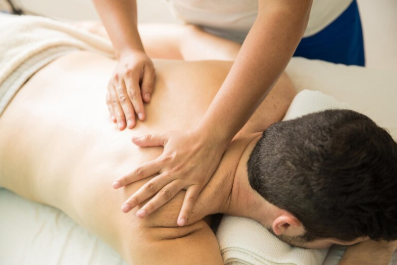If you’ve ever struggled with chronic muscle tension, stress, or lingering injuries, you’ve likely come across the term deep tissue massage therapy. But what exactly does this type of massage entail? More importantly, is it the right solution for your body’s needs?
In this guide, we’ll walk you through what you can expect before, during, and after a deep tissue massage therapy session. We’ll also explore how it compares to other treatments like the best aromatherapy massage or even the best Thai massage NYC offers. Whether you’re new to massages or simply looking for a deeper healing experience, this article will help you make an informed choice.
What is Deep Tissue Massage Therapy?
Deep tissue massage therapy is a technique designed to target the deeper layers of muscle and connective tissue in the body. Unlike Swedish massage, which focuses more on relaxation and surface-level muscles, this method uses slower, more forceful strokes to release chronic muscle tension, knots, and adhesions.
The primary goal is to realign deeper layers of muscles and fascia (the connective tissue surrounding muscles), which can become tight or inflamed due to poor posture, overuse, or injury.
The Experience: What to Expect During Your Session
When you walk into a spa or clinic that offers deep tissue massage therapy, you can expect a highly personalized experience. Here’s a breakdown of what the process usually looks like:
1. Consultation and Assessment
Your session typically begins with a short consultation. The therapist will ask about your health history, pain points, injuries, or areas of concern. This helps them tailor the massage to your specific needs, ensuring safety and effectiveness.
2. Starting with Light Pressure
Although it’s called a “deep tissue” massage, therapists usually begin with light pressure to warm up the muscles. This phase feels similar to a traditional Swedish massage but gradually transitions into deeper strokes as your muscles become more relaxed.
3. Targeted Deep Pressure
The therapist will use their hands, fingers, knuckles, elbows, or even forearms to apply concentrated pressure to trouble areas. You may feel some discomfort during this part—especially if your muscles are particularly tense—but it should never cross the line into pain.
Always communicate with your therapist. If the pressure is too much, they can adjust accordingly. Deep tissue work should feel like a “good hurt,” not sharp or unbearable pain.
4. Post-Massage Recovery
After your session, it’s not uncommon to feel a bit sore for a day or two—similar to how you might feel after a hard workout. Drinking plenty of water and doing some light stretching can help flush out toxins and speed up recovery.
Benefits of Deep Tissue Massage Therapy
Now that you know what to expect, let’s dive into why this type of massage is worth considering. The benefits extend far beyond muscle relief.
1. Chronic Pain Relief
One of the most widely recognized benefits of deep tissue massage therapy is its ability to relieve chronic pain. Whether you’re dealing with back pain, neck stiffness, or shoulder tension, this technique can significantly reduce discomfort by addressing the root cause—tight muscles and fascia.
2. Improved Blood Circulation
The pressure and movements used in deep tissue massage help promote better blood flow, which is essential for healing. Enhanced circulation brings fresh oxygen and nutrients to muscle tissues, helping repair damage and remove waste products.
3. Better Posture and Flexibility
People with desk jobs or sedentary lifestyles often suffer from poor posture and stiffness. Deep tissue massage helps loosen up tight areas, making it easier to sit, stand, or move with better alignment. Over time, it can significantly improve your range of motion and flexibility.
4. Stress and Anxiety Reduction
While it’s more intense than relaxing massages like the best aromatherapy massage, deep tissue work can still be incredibly effective in reducing stress. Physical tension and mental stress often go hand in hand, so working out the knots in your muscles can also quiet your mind.
5. Faster Injury Recovery
Athletes or those recovering from injuries like strains, sprains, or even surgeries can benefit from this therapy. By breaking down scar tissue and improving lymphatic drainage, deep tissue massage accelerates recovery while preventing future injuries.
Deep Tissue Massage vs. Other Techniques

If you’re still unsure whether this is the right kind of massage for you, let’s compare it to a few other popular techniques.
Deep Tissue vs. Aromatherapy Massage
The best aromatherapy massage uses essential oils combined with lighter massage techniques to promote relaxation and emotional healing. It’s ideal for people looking to reduce anxiety, insomnia, or mild tension—but it doesn’t address the deeper muscle layers like deep tissue does.
If your goal is relaxation and mood enhancement, go for aromatherapy. But if you’re chasing physical relief from chronic pain or tight muscles, deep tissue is the better choice.
Deep Tissue vs. Thai Massage
The best Thai massage NYC offers blends acupressure, stretching, and yoga-like movements to energize the body and enhance flexibility. Thai massage is usually performed on a mat without oils and involves the therapist using their entire body to guide you into deep stretches.
Both techniques are highly effective but serve different purposes. Thai massage is more dynamic and stretching-based, while deep tissue is slower and more focused on muscle manipulation. Many people find alternating between the two helps them maintain overall balance and wellness.
Who Should (and Shouldn’t) Get Deep Tissue Massage?
Ideal Candidates:
- Athletes or active individuals
- Office workers with neck or back tension
- People recovering from injuries or surgeries
- Those suffering from chronic pain conditions
Those Who Should Consult a Doctor First:
- Individuals with blood clotting disorders
- Those taking blood thinners
- People with osteoporosis or bone conditions
- Pregnant individuals (some spas offer prenatal deep tissue options)
Always disclose any medical conditions to your massage therapist before the session begins.
How Often Should You Get Deep Tissue Massage Therapy?

There’s no one-size-fits-all answer, but generally:
- For chronic pain or injury recovery: Once a week for 4–6 weeks
- For maintenance: Every 2–4 weeks
- For stress management: Monthly or as needed
Consistency is key. One session can offer temporary relief, but regular appointments lead to long-lasting results.
Final Thoughts
Deep tissue massage therapy isn’t just a luxury—it’s a powerful healing tool. From easing chronic pain and stress to helping with posture and injury recovery, it provides both physical and emotional relief. If you’re someone who often deals with tight muscles, stress, or limited mobility, this form of therapy might just be the answer you’ve been looking for.
Whether you complement it with the best aromatherapy massage for a holistic experience, or combine it with stretching techniques from the best Thai massage NYC has to offer, one thing is clear: when done correctly, deep tissue massage therapy can transform your overall health and well-being.
Frequently Asked Questions (FAQ)
Q1: Is deep tissue massage supposed to hurt?
A little discomfort is normal, especially if your muscles are tense or inflamed. However, the pain should be tolerable. Always communicate with your therapist so they can adjust the pressure.
Q2: How long is a typical deep tissue massage session?
Most sessions last between 60 to 90 minutes, depending on your needs. Longer sessions allow the therapist to focus on multiple areas of tension.
Q3: Can I get deep tissue massage if I’m pregnant?
It’s best to consult your doctor first. Some therapists offer prenatal deep tissue massage, but pressure points and positions must be adjusted for safety.
Q4: Will I feel sore afterward?
Yes, mild soreness is common, especially if it’s your first session or if the therapist worked on particularly tight muscles. It should subside within 24–48 hours.
Q5: What should I do after the massage?
Drink plenty of water, avoid heavy workouts immediately after, and do light stretching. These steps help your body flush out toxins and maintain the benefits of the massage.
If you’re ready to experience a deeper level of healing, consider booking your deep tissue massage therapy session today. Your muscles—and your mind—will thank you.




